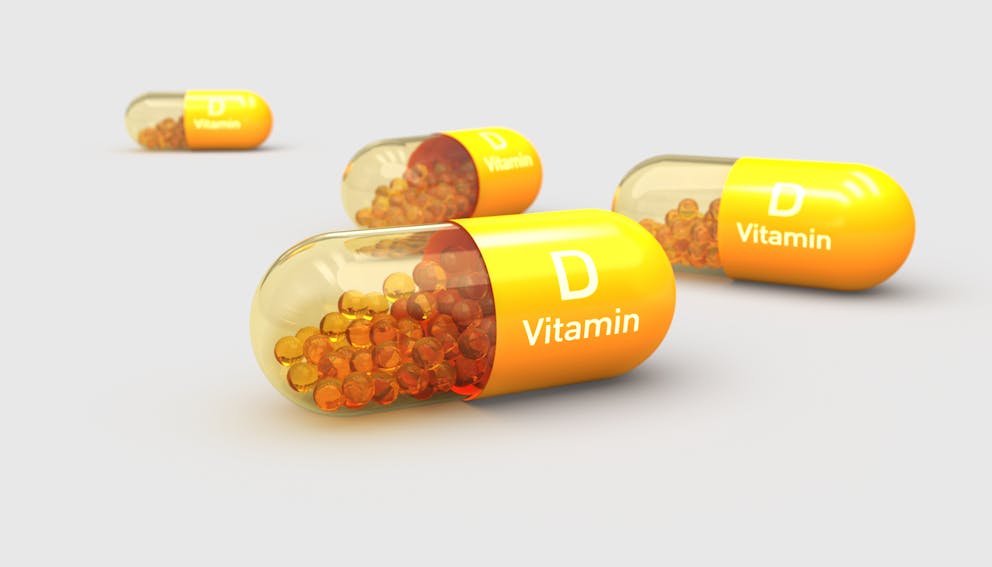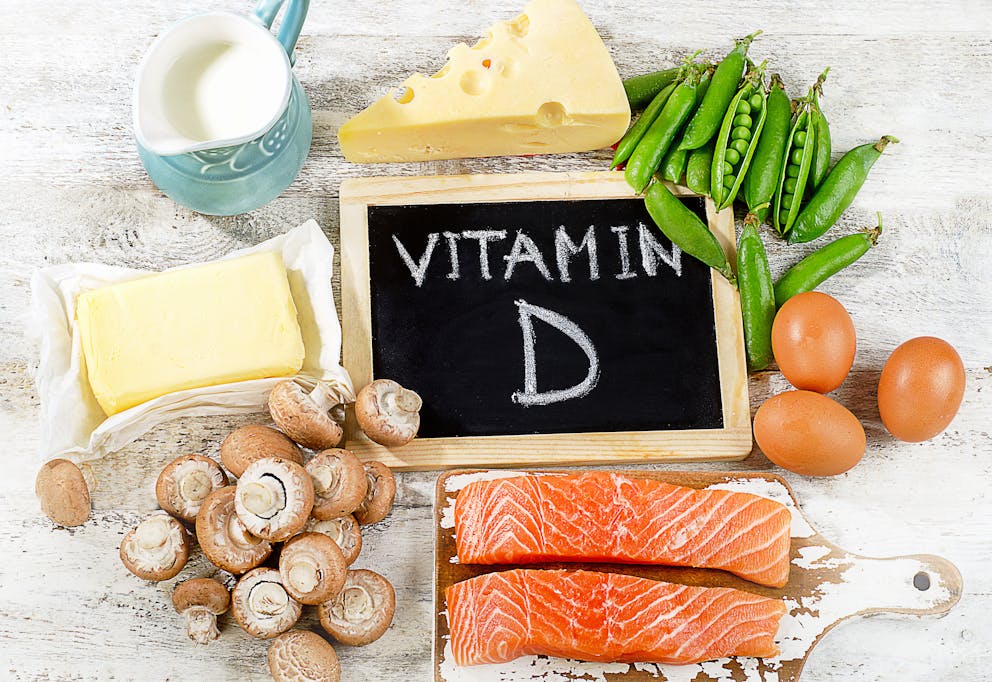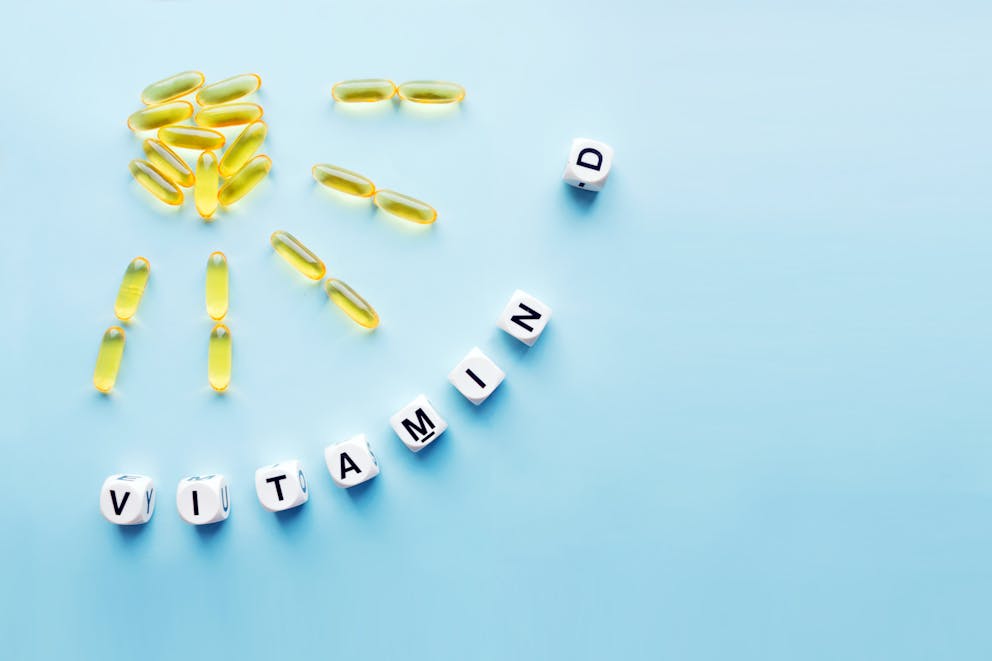Vitamin D vs. Vitamin D3: What’s the Difference?
Vitamin D, the sunshine vitamin, is essential for human health. This fat-soluble vitamin promotes intestinal calcium absorption and bone health and supports normal immune function.
Because of vitamin D’s many health benefits and deficiency being a widespread issue, vitamin D supplementation has become increasingly popular. However, not all dietary supplements contain the same type of vitamin D.
Let’s talk about the difference between vitamin D2 and vitamin D3 and why vitamin D3 is the best choice to support your health.

What is vitamin D?
Vitamin D is a group of chemically similar compounds that belong to the family of fat-soluble vitamins. Vitamin D regulates many aspects of physiological functioning and plays an essential role in bone and immune health.
In fact, research suggests that almost all cells in the human body have vitamin D receptors, which indicates that vitamin D is involved in regulating normal cell function.
Unsurprisingly, vitamin D deficiency can have significant health implications, and it's estimated that more than 40 percent of U.S. adults have low vitamin D levels.
While there are some food sources of vitamin D, adequate sun exposure and supplementation are the best ways to maintain normal vitamin D levels.
Watch the video below to discover the difference between vitamin D vs D3.
Vitamin D2 vs. D3
Vitamin D naturally occurs in two primary forms: vitamin D2 and vitamin D3.
Vitamin D3 is produced when the skin is exposed to sunlight. Ultraviolet B (UVB) radiation triggers a cascade of chemical processes in the skin that converts previtamin D3 into vitamin D3, which is transported to the liver and kidneys, where it’s converted into its active form.
Vitamin D3 can also be obtained from animal sources, including fatty fish, fish liver oil, egg yolks, beef liver, and other organ meats. However, food sources typically only contain small amounts, and it’s unlikely you will get enough vitamin D from dietary intake alone.
Vitamin D2 is primarily found in wild mushrooms. Because vitamin D2 is cheap and easy to produce, it’s typically found in over-the-counter vitamin supplements and fortified foods, including orange juice and breakfast cereals.
While both forms of vitamin D are similar in structure, they have key differences. Vitamin D3 is a more potent form of vitamin D and appears to have a longer half-life, meaning that vitamin D3 can be better utilized and is more effective in maintaining healthy vitamin D blood levels.
In addition, dietary or supplemental vitamin D3 is more efficiently absorbed into the body than vitamin D2.

Health benefits of vitamin D3
It's well established that vitamin D plays a crucial role in skeletal health and supports a strong immune system.
However, in recent years, numerous studies have confirmed various other health benefits of vitamin D. Some scientists even argue that vitamin D is so essential for health that it should be classified as a hormone, not a nutrient.
Let's take a look at four health benefits of vitamin D.
1. Supports healthy bones
Without enough vitamin D, the body cannot effectively absorb calcium from the diet, leading to low calcium levels that can result in weak and brittle bones prone to fractures.
Healthy vitamin D levels also reduce the risk of osteoporosis, which leads to fragile bones and an increased risk of fractures, particularly in older adults.
2. Promotes a strong immune system
Vitamin D plays an essential role in supporting the immune system. It helps regulate the production and activity of white blood cells, the body's primary defense against infections and diseases.
Evidence suggests that low vitamin D levels increase the risk of infections, including the flu and respiratory tract infections. Conversely, healthy vitamin D levels have been associated with a stronger immune response and a reduced risk of microbial infections.
3. Lowers the risk of cancer
Vitamin D has been shown to reduce the risk of certain types of cancer, such as colorectal, breast, and prostate cancer.
The exact mechanism by which vitamin D may reduce cancer risk is not fully understood. However, it's believed that vitamin D inhibits cell growth of cancer cells and stimulates the activity of immune cells that detect and eliminate cells that appear carcinogenic.
4. Supports mental health
Studies have shown that vitamin D deficiency may increase the risk of depression, anxiety, and other mood disorders. On the other hand, optimal vitamin D has been associated with improved mood and cognitive function.
Vitamin D supports the production of serotonin, a neurotransmitter directly involved in mood regulation.

Signs of vitamin D deficiency
Vitamin D deficiency is widespread and can pose significant health issues.
Some common symptoms of vitamin D deficiency include:
Depression
Weakened immune system
Fatigue
Brittle bones
Various factors can impact the production of vitamin D in the skin and diminish intestinal absorption of dietary or supplemental vitamin D.
Here are some surprising reasons why you may be at risk of vitamin D deficiency:
Geographical location and lack of adequate sunlight exposure
Bodyweight (increased body fat lowers vitamin D levels)
Skin tone
Genetic predisposition
Gallbladder issues
Age
Common drugs, including antibiotics and corticosteroids medications

Vitamin D3 supplement dosage
How much vitamin D you need depends on many factors, including your age and health status and your average exposure to sunlight.
The National Institute of Health recommends 600 international units (IU) of vitamin D daily. However, a significantly higher dosage is often necessary to raise levels if you are vitamin D deficient or have little to no sunlight exposure.
Frequent blood tests to check your vitamin D status are the best way to determine your ideal vitamin D dosage to maintain healthy vitamin D levels.
When to take vitamin D
Most people benefit from taking a vitamin D supplement regularly, especially if they don’t get adequate sunlight exposure, are older, or frequently take corticosteroids and antibiotics.
Vitamin D is fat-soluble and should always be consumed with a fat-containing meal. That’s why most vitamin D supplements come in liquid gel capsule form that contains fat to aid intestinal absorption.
Vitamin D is typically taken in the mornings or with the first fat-containing meal. However, if you are taking vitamin D to support healthy sleep, it’s recommended to take your vitamin D supplement during the late afternoon.

Key takeaways
Vitamin D is an essential vitamin that supports bone health, promotes a strong immune system, and may lower your risk of cancer and depression.
Compared to vitamin D2, vitamin D3 is more effective in maintaining healthy vitamin D levels, is a more potent form of vitamin D, and is less likely to cause side effects and toxicity.
While some foods provide small amounts of vitamin D3, adequate sunlight exposure and vitamin D3 supplementation are the best ways to ensure healthy vitamin levels that promote overall health and well-being.
FAQ
1. How much vitamin D3 do I need?
The correct vitamin D3 dosage depends on your vitamin D blood levels, geographical location, sunlight exposure, skin tone, and medication use.
General recommendations are around 600 IU of vitamin D per day. However, taking 600 IU of vitamin D may not be enough, and you may need a significantly higher dose of vitamin D3 to raise levels if you are deficient.
2. Can I take vitamin D3 every day?
Yes, it’s generally considered safe to take a high-quality vitamin D supplement daily. Regular blood tests to check your vitamin D levels help to determine the correct vitamin D dosage to maintain healthy blood levels. Always take vitamin D3 with vitamin K2.
3. Do I need to take more vitamin D in the winter?
Vitamin D is produced when the skin is exposed to sunlight. Unsurprisingly, it’s more common to develop low vitamin D levels during winter months, and it’s recommended to increase your vitamin D dosage during the winter to avoid deficiency.
Regularly checking blood levels helps to determine your optimal vitamin D dosage.
4. How is vitamin D3 made?
When skin is exposed to ultraviolet B (UVB) radiation, a chemical chain reaction is triggered that transforms previtamin D3 into vitamin D3, which is transported to the kidneys and liver, where it’s converted into its active form.
5. How are vitamin D3 supplements made?
Vitamin D3 supplements are most often derived from lanolin extracted from sheep’s wool, and vegan vitamin D3 supplements are derived from algae.
6. Is vitamin D2 the same as vitamin D3?
Although vitamin D2 and D3 are very similar, vitamin D3 is a more potent form that raises blood levels quicker and is overall considered more effective. In addition, vitamin D3 is better absorbed and has a lower risk of toxicity than vitamin D2.
Vitamin D3 is produced when the skin is exposed to UVB radiation. Small amounts can also be found in animal sources, including organ meats, fish oils, and egg yolks. In contrast, vitamin D2 is found in plant foods such as wild mushrooms and is typically used in vitamin D-fortified foods, including orange juice and breakfast cereals.
7. Is all vitamin D the same?
Vitamin D is a group of fat-soluble vitamins that are similar in structure. Vitamin D2 and D3 are the predominant forms, and research suggests that vitamin D3 is a more effective form of vitamin D. Vitamin D3 raises blood vitamin D levels more efficiently than vitamin D2.
8. What happens if you have too much vitamin D?
Vitamin D promotes the intestinal absorption of calcium. Taking too much vitamin D3 without vitamin K2 can cause excessive calcium levels, increasing the risk of kidney stones and bone pain.
9. Which foods have the most vitamin D?
Oily fish, fish liver, egg yolks, beef liver, and other organ meats are vitamin D3 sources.
10. When is the best time to take vitamin D3?
Taking a vitamin D3 supplement with a fat-containing meal is best to promote intestinal absorption. Most people take vitamin D3 in the mornings or with the first meal.
Vitamin D can also be taken at any time during the day. However, some people experience disrupted sleep when taking vitamin D in the afternoon or evening.
Previous blog
Acetic Acid: Food Sources and BenefitsNext blog
How to Use Kefir for Better Sleep
Popular
08/21/2024
46.4K views
05/22/2024
40.8K views
11/18/2024
241.9K views
03/18/2024
11/21/2022




